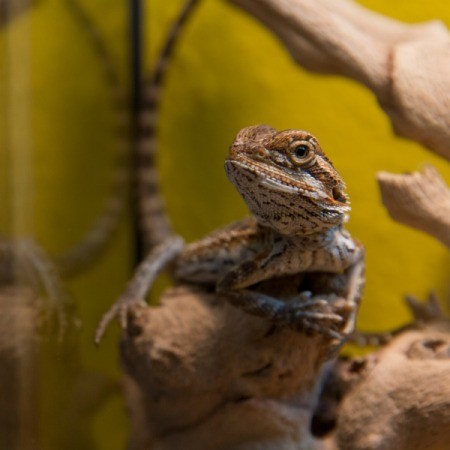Before buying a pet, it's imperative that the prospective owner evaluate care, longevity, needs, and cost. Reptiles are appealing and popular pets, but often their needs are underestimated. The precautious buyer may be aware of these needs, but may be turned away from the overall cost of the animal's care. While it's good to evaluate overall lifetime costs, keep in mind that there are ways to own a lizard for less.
While the animal itself should come from a reliable location, the supplies are the same no matter where you find them. Pet stores target a specific audience and ask that audience to pay deeply for its items. Shop around for your items to find them cheaper.
Your cheapest place to find reptilian setup supplies may very well be your local hardware store. Timers, thermometers, light cones, and even humidity devices can be found at the home improvement store for a bottom price. When measured up to the brands offered at pet shops they compare equally. For items like shelving or aquarium displays, look at office supply stores or other furniture outlets and think creatively.
In 2011 Americans spent more than $50 billion on their pets, an all time high. While employees at pet stores may intend to help you, they often recommend what they are trained to recommend. Employees are notoriously known to push expensive light bulbs and heated rocks onto new owners. These products are not only expensively unnecessary but dangerous to certain types of reptiles. Instead, arm yourself with knowledge before entering the store, politely thank the associates for their help, and dismiss their advice.
Even those salespeople who own multiple reptiles may not be caring for their reptiles correctly. Instead, rely on those who have successfully raised reptiles or veterinarians and breeders.
This is the area where you'll be tempted to spend the most money, but where you truly need to spend the least. Hiding places can be made from upside down flower pots or plastic storage containers.
Plastic plants can cost as much as $16 each. Make your own with sphagnum moss, wood from your yard, and sections of plastic decorative plants. Glue them together with silicone glue used for aquariums. To avoid the assembly and a bit of the cost, add driftwood or other wooden pieces from your yard to decorate the tank. Flat rocks can be glued together with the silicone glue to create caves, climbs, or other elements. Always glue rocks so that the items in your tank are stable, and boil the items for a few minutes to disinfect them. Never use pine or cedar in your vivarium.
When purchasing your initial aquarium, consider finding a wooden domicile for your new friend, especially if he requires high heat. The wooden frame will hold heat better than a glass enclosure. They're not plentiful, but they are available.
Raising and breeding your own stock of crickets seems to be more work than savings unless you require vast amounts of live food for your pets. Instead, keep crickets in a small plastic portable container with a vented top. Add some empty toilet paper tubes, some gut loading cricket food in an empty lid, and a few slices of fruit and you have a cricket house that will keep them for two or three weeks.

Add your voice! Click below to comment. ThriftyFun is powered by your wisdom!
There is a rescue in North Carolina that has this page on Bearded Dragons. I wanted to share it on your post, for the community members who may be interested in lizards as pets. I have heard wonderful things about these creatures as pets.
That is my son's new bearded dragon, Buddy. I had my husband snap a photo of him when I needed an image to go with Kelly's article.
So far, he has been very easy to care for and a nice addition to the family.
Add your voice! Click below to comment. ThriftyFun is powered by your wisdom!